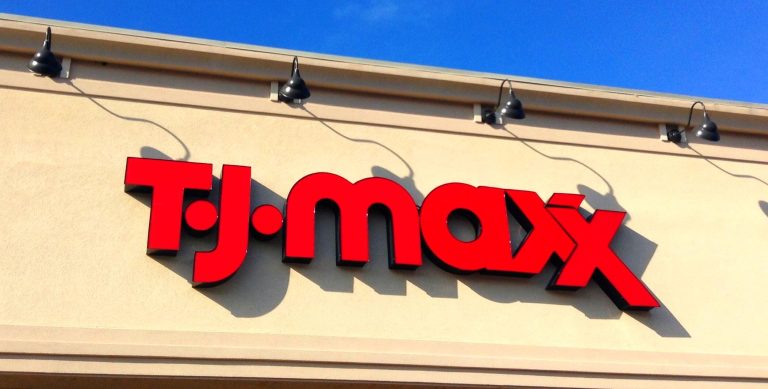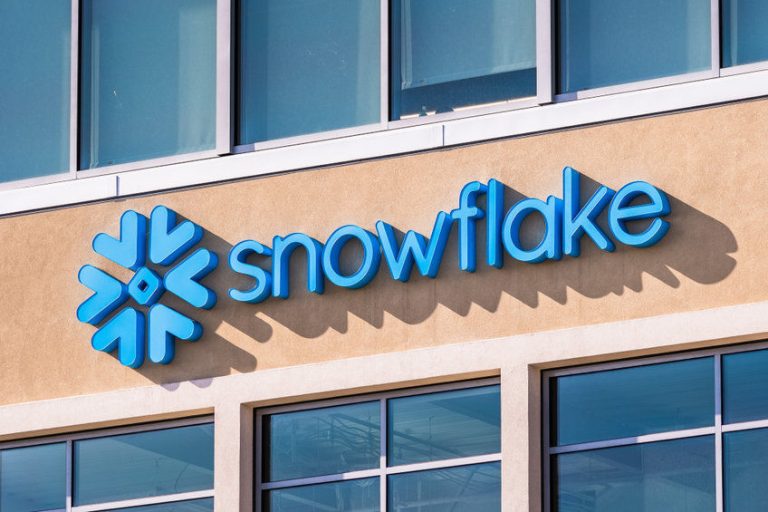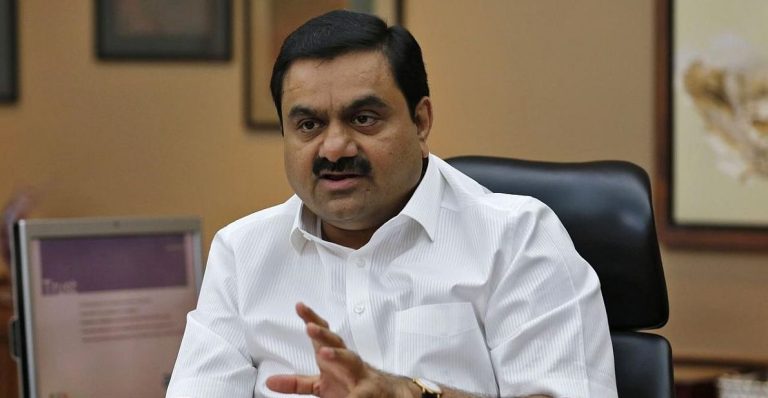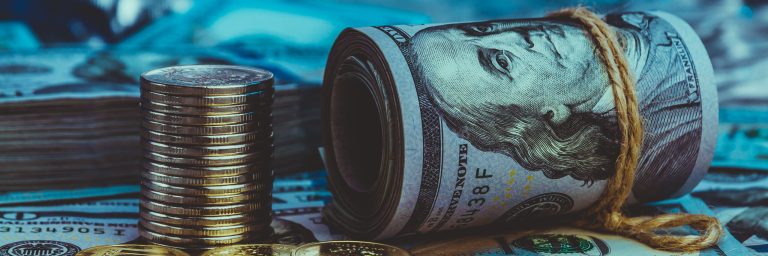Adani Group stocks remained volatile on Friday amid ongoing uncertainty over the company’s future, following US indictment charges against Gautam Adani and other executives for allegedly paying $265 million in bribes to Indian officials to secure solar energy contracts.
Shares of Adani Enterprises, the flagship company of the conglomerate, plunged 7% in early trade to hit a 52-week low of ₹2,030.
Similarly, Adani Ports and Special Economic Zone Ltd. saw a steep fall of 5.3%, touching ₹1,055.40 during the morning session.
Other major group entities, including Adani Power, Adani Energy Solutions, and Adani Total Gas, also faced significant declines of up to 5%.
These drops extended losses from Thursday when some group stocks fell as much as 20% following the US Department of Justice (DoJ) indictment of Gautam Adani and key executives on charges of bribery and fraud.
However, by midday Friday, Adani stocks staged a recovery.
Adani Enterprises rallied to close up 3.5%, Adani Ports and Adani Power rose 2% each, and Adani Total Gas gained 2.6%.
Notably, Adani Wilmar climbed 0.8%, while Adani Energy Solutions remained down by 2.6%, reflecting lingering concerns among investors.
Adani cos share price movements: analysts’ take
Analysts had mixed reactions to the stock price movements. The broad consensus suggested that while the turbulence is sentiment-driven, the companies’ fundamentals remain strong.
However, stocks could face continued pressure, potentially resulting in prolonged underperformance and heightened risks for stakeholders.
Anshul Jain, Head of Research at Lakshmishree Investment and Securities, argued that developments in US courts are unlikely to have a material impact on the group’s operations.
“The recent sell-off is a knee-jerk reaction to the news. We’ve seen similar trends earlier, such as after the Hindenburg Research report. Once the dust settles, Adani Group stocks are likely to rebound strongly,” Jain said.
In a note to investors, Sumeet Bagadia, Executive Director at Choice Broking, identified Adani Ports as a stock worth considering for “bottom fishing.”
He recommended buying Adani Ports at its current levels, with a near-term target of ₹1,250 and a stop-loss at ₹1,000.
Ajit Mishra, senior vice president of research at Religare Broking identified Adani Energy Solutions and Adani Wilmar as particularly vulnerable to further corrections.
Mishra advised investors to approach these stocks with caution, recommending that they avoid taking positions until there are clear indications of stability in the group’s performance.
Rating agencies raise red flags
Global ratings agencies have taken a cautious approach in the wake of the allegations.
S&P Global Ratings revised its outlook for three Adani entities—Adani Ports and SEZ Ltd, Adani Green Energy Ltd, and Adani Electricity Mumbai Ltd—to negative.
While maintaining existing credit ratings, S&P cited risks to the group’s cash flows, funding costs, and governance practices.
The rating agency warned that if the allegations are proven or investor confidence deteriorates further, the Adani Group may face higher borrowing costs and restricted access to capital markets.
The indictment, coupled with ongoing investigations by Indian authorities, could compound the challenges faced by the group.
Similarly, Moody’s Investors Service flagged the allegations as “credit negative.”
It emphasized that the focus should remain on the group’s ability to secure financing to meet its growth and liquidity requirements.
“Adani’s reliance on frequent access to equity and debt markets makes the group particularly vulnerable to any erosion of investor confidence,” Moody’s noted in its report on Thursday.
GQG Partners responds with stock buyback
The repercussions of the allegations have also rippled through the global investment community, notably impacting GQG Partners Inc., one of the largest investors in Adani Group stocks.
Following a 19% plunge in its shares on Thursday, GQG announced a buyback program worth up to A$100 million ($65 million) in an attempt to stabilize its stock price and reassure investors.
The Florida-based asset manager, which had invested heavily in Adani Group entities following the Hindenburg Research report, remains committed to its contrarian bet on the Indian conglomerate.
Despite Friday’s partial recovery, GQG shares have yet to recoup their full losses, underscoring the broader implications of the Adani controversy.
Legal options ahead for Adani
While the Adani Group denied the allegations and reiterated its commitment to compliance, the indictment marks a significant escalation in scrutiny.
Legal experts clarified that an indictment merely indicates that sufficient evidence exists to bring the case to trial and does not constitute a conviction.
“The indictment is a formal notice and does not determine guilt. The actual trial proceedings will ultimately decide the outcome,” explained a senior US-based corporate lawyer in an Economic Times report.
Legal experts believe the Adani Group could resolve the charges through a Deferred Prosecution Agreement (DPA) or a Non-Prosecution Agreement (NPA).
These mechanisms, commonly used in US corporate law, allow companies to avoid a trial by agreeing to pay penalties and implementing stricter compliance measures.
“Settlement is a viable option for the Adani Group. It allows the company to mitigate legal risks without admitting guilt, provided it meets the conditions laid out by prosecutors,” explained a senior legal advisor.
High-profile cases involving Siemens and Ericsson provide precedents for such resolutions.
Both companies paid substantial fines—$800 million and $1 billion, respectively—to resolve bribery allegations.
Potential long-term impact on the group
Market experts are divided on the long-term implications of the bribery charges.
Proxy advisory firm InGovern Research suggested that borrowing costs for Adani’s infrastructure projects could rise as lenders impose stricter conditions.
“Even if the group resolves the charges, it may face challenges in raising international funds in the near term due to heightened scrutiny,” noted Narinder Wadhwa, Managing Director at SKI Capital.
Jathin Kaithavalappil, assistant vice president at Choice Broking, emphasised that the bribery allegations have significantly eroded investor confidence in the Adani Group.
He warned that the accusations could hinder the group’s ability to secure financing and exacerbate negative market sentiment.
With unresolved governance concerns and intensified scrutiny, Kaithavalappil predicted sustained pressure on Adani stocks, potentially leading to prolonged underperformance and increased risks for stakeholders.
However, some analysts remain optimistic about the group’s ability to recover.
“Adani’s fundamentals remain strong. The group’s extensive portfolio in critical sectors like ports, energy, and logistics provides a solid foundation for long-term growth,” argued a senior analyst at a Mumbai-based brokerage.
The post Analysis: as Adani battles charges and stocks remain volatile, this is what investors should know appeared first on Invezz










